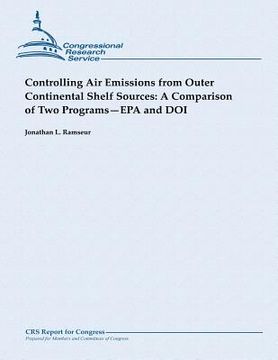Controlling Air Emissions from Outer Continental Shelf Sources: A Comparison of Two Programs - EPA and DOI (in English)
Synopsis "Controlling Air Emissions from Outer Continental Shelf Sources: A Comparison of Two Programs - EPA and DOI (in English)"
Air emissions from outer continental shelf (OCS) operations are subject to different regulatory programs, depending on the location of the operation. The Department of the Interior (DOI) has jurisdiction over OCS sources in federal waters in the western Gulf of Mexico and most of the central Gulf. In addition, the Consolidated Appropriations Act, 2012 (P.L. 112-74), transferred air emission authority in the OCS off Alaska's north coast from the Environmental Protection Agency (EPA) to DOI. EPA has jurisdiction over sources in all other federal waters. The primary difference between the EPA and DOI programs is rooted in the different statutory authorities: the 1990 Clean Air Act (CAA) and the 1978 Outer Continental Shelf Lands Act (OCSLA). The primary objectives of these statutes are different-air quality versus offshore energy development. The two regulatory programs reflect these underlying differences. For much of the past 30 years, these differences received little attention, primarily because most of the federal oil and gas resources in EPA's jurisdiction have been subject to moratoria. In 2008, moratoria provisions expired, potentially opening many of the areas in EPA's jurisdiction to oil and gas leasing activity. If more OCS areas in EPA's jurisdiction are open for oil and gas leasing, policymakers interest in these differences will likely increase. For OCS sources in EPA's jurisdiction, requirements depend on whether the source is located within 25 miles of a state's seaward boundary ("inner OCS sources") or beyond ("outer OCS sources"). Inner OCS sources are subject to the same requirements as comparable onshore emission sources, which vary by state and depend on the area's air quality status; outer sources are subject to various CAA provisions, including the Prevention of Significant Deterioration (PSD) program. In contrast, OCS sources in DOI's jurisdiction are subject to air emission requirements only if emissions would "significantly affect" onshore air quality. A key difference between the EPA and DOI programs is the federal emission threshold that would subject a source to substantive requirements. For sources in EPA's jurisdiction, this is the PSD threshold of 250 tons per year (tpy) of regulated emissions. Sources that exceed this level would likely be subject to Best Achievable Control Technology (BACT) and other provisions. States' analogous thresholds that apply to inner OCS sources may be more stringent. By comparison, a DOI OCS source applies an exemption formula, based on distance from shore (e.g., a source 30 miles from shore would have an emission threshold of 990 tpy). If a source remains subject after this step, it must conduct air modeling to assess whether its emissions would have a significant effect on onshore air quality. In effect, this two-step process constitutes a much less stringent threshold than EPA's 250 tpy threshold. Another substantial difference is the time frame allotted to the agencies for reviewing a potential source's permit (EPA) or activity-specific plan (DOI). In addition, the EPA permit process allows greater opportunity for input from the public. In particular, EPA's Environmental Appeals Board offers parties a powerful tool to compel agency review. Therefore, two identical operations, located in separate jurisdictions, could face considerably different requirements and procedural time frames. Some stakeholders would likely argue that the additional opportunities for public involvement in EPA's permit process help create a balance between resource development and environmental concerns. Others would likely contend these steps present unnecessary burdens and timing uncertainty in the process.

